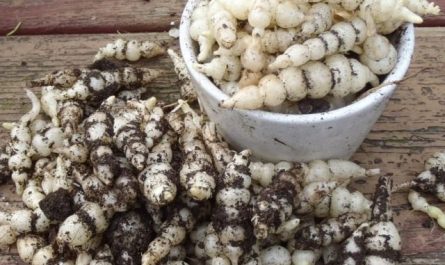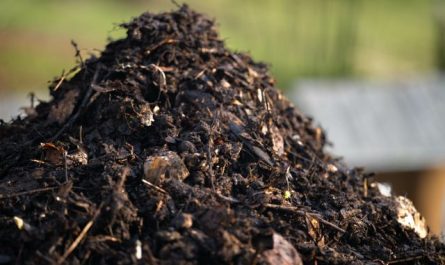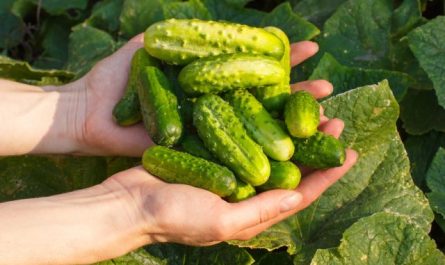Not all of us have the opportunity to grow tomatoes in a garden bed or a greenhouse. However, every home has a windowsill. And if you want, you can also try growing tomatoes on the windowsill. And not only in summer, but also in winter. However, here you need to follow certain rules that will allow you to achieve the best results. This includes choosing the right variety, determining the volume of the container, using the right watering rates, and properly applying fertilizers, as well as some other subtleties that are necessary specifically in potted tomato culture.

Variety, variety and once again variety
In truth, you can grow any variety of tomato on a windowsill. But tall, large-fruited ones will not give the expected results. The small volume of soil in the pot will not allow them to build up a sufficient root system: the plants will grow, but most likely, they will stretch out and give no more than one, maximum two not very large fruits. In addition, it is necessary to take into account the rule: the larger the variety, the later it ripens. And for growing on a windowsill, this is not the best option.
For this reason, if you set a goal to get a tomato harvest on a windowsill or in a balcony box, look for dwarf determinate varieties bred specifically for this purpose. Often their packaging says “for growing in pots”. Today, there is a huge selection: “Balcony Miracle”, “Yellow Potted Tomato”, “Red Potted Tomato”, “Stone Flower F1”, “Bonsai”, “Monetka”, “Little Red Riding Hood”, “Pinocchio”, “Indoor Surprise”, “Titmouse”, “Snegirok” … Among them, there are plants with red, yellow, orange, pink fruits. Varieties with larger and smaller tomatoes, weighing from 10 to 25 – 30 g.
A denser and more spreading bush. Height from 15 to 40 – 50 cm. Such tomatoes do not need garters, supports and shaping. They can grow in a small pot. Often have a long fruiting. In most cases, they are distinguished by a soft, sweet taste, without sourness.

Choosing a Pot for Tomatoes
When choosing a variety, you should immediately focus on the volume of the container in which it will be grown. So, dwarf plants with a compact bush up to 25 cm high are quite capable of yielding a harvest in small pots with a volume of 1,5-2 liters. Tomatoes about 30 cm high are best planted in pots with a volume of at least 3 liters. Bushes 40 cm high will feel better in a container with a volume of 5 liters. Plants higher than 50 cm are recommended to be planted in containers with a volume of at least 10 liters. If several plants are planned for planting in one pot, the volume of the container should be multiplied by their number.
The material of the pot does not matter. However, considering that in adverse weather the plants may have to be brought in, the best choice would be plastic, as the container made of it is not so heavy.
Growing tomato seedlings
Despite the fact that potted tomatoes are intended for growing in a room or on a balcony, at the first stages of development, agricultural technology is no different from plants intended for growing in beds. It is necessary to select the largest seeds, pickle them for 20 minutes in a 1% solution of potassium permanganate. Then rinse and, if you want to speed up the emergence of seedlings, soak in a growth stimulator – “Epine Extra”, “Sodium Humate” or boric acid.
Next, it is recommended to soak the prepared seed material in a damp piece of cloth, keeping it at a temperature of +22…25 °C. And when the first seeds hatch, sow them in peat tablets, cups or bowls.
The sowing dates for tomato seeds for indoor growing can be the same as for outdoor plants, but if you want to shift the ripening of the crop to a later time, for example, the pre-New Year period, then they can be planted later – from mid-July to mid-August. If you want to get a spring harvest – from mid-November to mid-December.
To speed up the emergence of seedlings, it is recommended to cover the containers with film or glass, which should be periodically opened for ventilation so that condensation does not accumulate. Maintain the temperature at +22…+24 °C. And as soon as the first loops appear, put the seedlings in the sun and reduce the temperature to +7…+10 °C for 12 days, otherwise the plants will begin to stretch.
The film should be gradually removed. If the day is not long enough, arrange additional lighting so that the seedlings receive enough light for 16 hours during the first month, then 14 hours. Raise the temperature to +22…+24 °C.



Transplanting tomatoes into pots
As soon as 5-6 true leaves appear on the tomatoes, the seedlings need to be transplanted to a permanent place: in pots, tubs or balcony boxes. You can take either universal soil or make up a mixture yourself. To do this, mix one part of turf soil, sand, peat and humus. Put a layer of expanded clay on the bottom of the pot. It is better not to add fertilizers before planting, so that the plants do not start to get fat.
When planting, it is recommended to pinch the central root of the seedlings a little. The seedlings themselves should be deepened a little – to the cotyledon leaves.

Place on the windowsill
The place for potted tomatoes should be the brightest – this crop loves the sun and if there is not enough of it, it stretches out, bears fruit poorly, and loses significantly in taste. Plants should be placed so that their leaves do not touch each other.

Caring for indoor tomatoes
Watering. Tomatoes in pots should be watered with settled water at room temperature as needed in the morning or evening. Cold water causes stress in plants, which is why they stop developing for a while. Overwatering in the summer can cause overheating of the root system, which is why plants also fall into a stressful state. In the cold period, it causes root rot.
Fertilizer. Ten days after transplanting, potted tomatoes can be fed with any complex fertilizer every 10-10 days, but in half the recommended dose. However, if the tomatoes are planted in large containers, it is not necessary to fertilize them – experience shows that they have enough nutrition without additional fertilizing.
Pollination. To help the tomatoes pollinate, they need to be shaken periodically so that the pollen falls from the stamens to the pistil. In addition, at temperatures above +28 °C, tomatoes stop budding, so on particularly hot days they need to be either shaded to bring the temperature down by at least a few degrees, or brought into a cooler room. I use the latter method – during hot hours I bring the pots from the balcony into the house.
Treatments against diseases and pests. Indoor tomatoes are affected by diseases and pests much less often than those grown in beds, so they do not need preventive treatment with pesticides. True, aphids, whiteflies, thrips can attack them too. But in the fight against them, preventive measures are often enough – wash off the aphids with water, lay out traps, tear off the first leaves affected by spots. And only if the number of insects is very high or the disease has begun to develop rapidly, use chemicals.




















